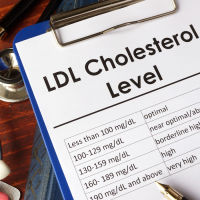When we talk about hypertrophic cardiomyopathy (HCM), sudden cardiac death (SCD) is one of the most devastating complications associated with this disease. It is also one of the most common causes of SCD in the young. However, the management of HCM has been made possible through the use of implantable cardioverter/defibrillators (ICDs), which were introduced nearly 20 years ago. ICDs have the capability of terminating potentially lethal ventricular tachyarrhythmias and have played a major role in the prevention of SCD in many patients.
Over the years, risk stratification and selection of patients with HCM for prophylactic ICD therapy has evolved, and different prediction strategies have also emerged. However, there is still a certain uncertainty associated with the proper identification of the highest-risk patients with HCM who could benefit from ICDs for the primary prevention of SCD.
This particular study tests 17 years of experience in a large institute study cohort that relied primarily on risk factor algorithms based on an enhanced version of the 2011 American College of Cardiology/American Heart Association (ACC/AHA) guidelines and other consensus documents.
The study was conducted with 2094 patients with a clinical HCM diagnosis. Patients were evaluated from June 2001 to December 2016. The mean follow-up duration from initial clinical evaluation to most reach contact was 4.7 years. Clinical diagnosis of HCM was based on echocardiographic or cardiovascular magnetic resonance imaging (CMR) identification.
Single-chamber or dual chamber ICDs were implanted in 527 patients for the primary prevention of SCD, and for secondary prevention in 7 patients after resuscitated cardiac arrest. Of the 527 patients, 483 received transvenous devices and 44 received subcutaneous ICDs.
Clinical markers that were used to determine increased risk and guide ICD recommendations were based on the 2011 ACC/AHA guidelines, the 2003 ACC/European Society of Cardiology (ESC) expert consensus, and 2017 AHA/ACC/Heart Rhythm Society guidelines, as well as markers emerging more recently with the introduction of CMR to HCM practice.
SCD risk was concluded if one or more of the following major risk markers were present:
- Family history of SCD definitively or likely caused by HCM in 1 or more first degree or other close relatives 50 years or younger.
- Left ventricular hypertrophy with wall thickness of 30mm or greater.
- Unexplained syncope with one or more unexplained recent episodes of loss of consciousness which was unlikely to be of neurocardiogenic aetiology.
- Nonsustained VT usually over 24 to 48 hours of ambulatory electrocardiography monitoring.
- Late gadolinium enhancement–identified fibrosis.
- Systolic dysfunction with ejection fraction less than 50%.
- Left ventricular apical aneurysm.
68.5% of the patients were asymptomatic or mildly symptomatic at initial evaluation. Of the 527 patients, 15.6% experienced 1 or more appropriate ICD interventions. Of these patients, 29% had multiple discharges, while 4 patients had VT storms. Only 1 of the ICD defibrillation shocks was in a patient with a subcutaneous device. 45% of patients with ICD therapy had substantially delayed intervals greater than 5 years.
Of the 82 patients with terminated VT or VF events, 95% were alive at a mean age of 49 years. 65% of those implanted with ICD interventions received it based on a single major risk marker, the most common being unexplained syncope, family history of HCM-related SCD, multiple and/or prolonged nonsustained VT, LV hypertrophy and LV apical aneurysm. In 24% of patients, the ICD decision was based on a combination of 2 risk markers, the most common of which included unexplained syncope associated with either a family history of SCD, nonsustained VT, or massive LVH.
The findings suggest that the current clinical practice strategy for prevention of SCD in HCM is highly effective and ICD decisions based on 1 or more conventional risk markers have demonstrated the effective prevention of SCD and have lowered mortality in the contemporary management era of this disease.
Source: JAMA
Image Credit: iStock
References:
Maron MS et al. (2019) Enhanced American College of Cardiology/American Heart Association Strategy for Prevention of Sudden Cardiac Death in High-Risk Patients With Hypertrophic Cardiomyopathy. JAMA. doi:10.1001/jamacardio.2019.1391
Latest Articles
hypertrophic cardiomyopathy, sudden cardiac death, ACC/AHA guidelines, implantable cardioverter/defibrillators
A new study uses risk factor algorithms based on enhanced version American College of Cardiology/American Heart Association guidelines.



























